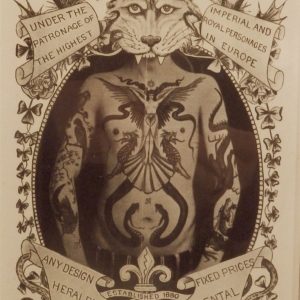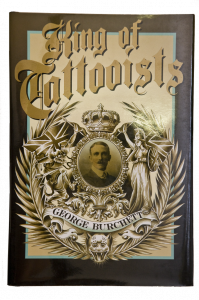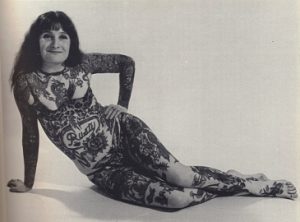Tattooing in the UK – Part II
 Sutherland Macdonald was a huge driving force in making tattooing as popular as it was in Victorian England early on among the upper classes. In 1898, the Harmsworth monthly pictorial magazine, later known as the London magazine, estimated that as many as every fifth person among the gentry had tattoos.
Sutherland Macdonald was a huge driving force in making tattooing as popular as it was in Victorian England early on among the upper classes. In 1898, the Harmsworth monthly pictorial magazine, later known as the London magazine, estimated that as many as every fifth person among the gentry had tattoos.
Even Winston Churchill’s mother had a snake tattooed around her wrist. However, this, of course, pales compared to the number of British sailors sporting body art during the time, which was as high as 80%.
No longer confined either to back alleys around the harbours or to the one upscale establishment in London’s West End, however, it is now accessible to a much broader range of customers.
Today, about one-fifth of all Britons have at least one tattoo. That includes nearly half of all millennials. While there was certainly a lull in the practice’s popularity, Sutherland Macdonald and his influence definitely contributed to tattooing’s relatively early adoption into a more mainstream part of UK society.
 ‘Professor’ Burchett and his kingly clientele
‘Professor’ Burchett and his kingly clientele
After Macdonald, the most influential tattoo artist in England during the early 20th century was George ‘Professor’ Burchett. Known as the ‘King of Tattooists’, he worked in London throughout the first half of the 20th century. He had a whole range of famous clientele, including King Alfonso XIII of Spain, King Frederick IX of Denmark and the ‘Sailor King’ George V of the United Kingdom.
His career began early as he, at 12 years of age, was expelled from school in his hometown of seaside Brighton for tattooing his classmates. He then joined the navy, where willing canvases came aplenty and began to hone his art.
After returning to shore and learning from Sutherland Macdonald himself, he later opened up studios on Mile End Road and at 72 Waterloo Road in London, where he began attracting his celebrity clientele. ‘Professor’ Burchett kept tattooing until his death at 80 years of age in 1953. His younger brother, Charles Davis, followed in his older sibling’s footsteps but never reached the aim acclaim.
Rusty Skuse on display in Piccadilly
Knowledge of tattooing also spread throughout the country by tattooed ‘attractions’ on display in circuses  and fairs. And while the UK may not have had as many famous ‘tattooed ladies’ as the travelling sideshows in the US, one tattooed British woman had a life-sized wax model of her displayed outside ‘The Guinness World of Records’ exhibition at the Trocadero in Piccadilly.
and fairs. And while the UK may not have had as many famous ‘tattooed ladies’ as the travelling sideshows in the US, one tattooed British woman had a life-sized wax model of her displayed outside ‘The Guinness World of Records’ exhibition at the Trocadero in Piccadilly.
Even though she turned down an offer to join a circus, Rusty Skuse became the most famous tattooed woman in the UK for a long time.
Janet Skuse, a.k.a. Rusty, was tattooed by her husband Bill Skuse and held the title of Britain’s most tattooed woman for 20 years. She also trained to become an artist herself, and apart from a small retirement project running a kennel for stray dogs, she continued tattooing until she died in 2007.
